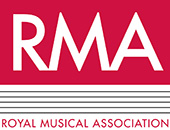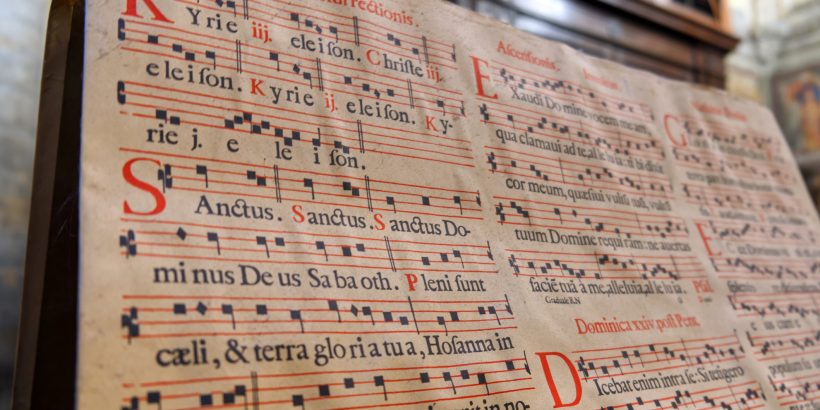Conference Report: Aspects of Early English Music – RMA Study Day/PGR Symposium
Between 20-21 February, 2024, the International Centre for Music Studies (ICMuS) at Newcastle University was privileged to host a two-day symposium for postgraduate students working on any ‘aspect of early English music’. The symposium drew together 24 delegates, 16 of whom were doctoral students or ECRs, including all 13 speakers.
Papers given at the symposium comprised the whole gamut of Medieval and Renaissance music. At the earliest end of our time period, Thomas Phillips (University of Bristol) shared with us his findings on reconstructing fragments from the Anglo-Saxon Office of St. Alban by comparing manuscripts from the eleventh and twelfth centuries. Cassandra Fenton (University of Bristol) also presented on an eleventh-century manuscript – a pontifical likely intended for use at a female monastic institution. Jack Stebbing (University of Cambridge) was the final of our chant scholars, presenting his research on the circulation of Letabundus exultet fidelis chorus, a melodic sequence that likely originated in northern France. It was one of the most widely circulating sequences in the central Middle Ages, and had a particularly interesting trend in insular manuscripts.
At the other end of our time period, Benjamin Maloney (University of York) gave a particularly illuminating presentation using Alexander Gil’s Logonomia Anglica (1619) to facilitate a reconstruction of Jacobean pronunciation. Sara Salloum (Durham University) treated us to some of her virtuosic lute playing, sharing with us how her creative practice has informed her doctoral research on re-enacting female lute performance in the domestic sphere (in particular, her study of the Margaret Board lute book). Performance and performativity was also the focus of Harriet Palin’s (Newcastle University) paper on the reciprocal relationship between catechising and English metrical psalm-singing in the mid-sixteenth century.
English carols were the subject of two papers by Philip Taylor (University of Liverpool) and Kalina Tomova (Bulgarian Academy of Sciences). Philip Taylor focused on the performance of the famous Agincourt Carol, studying the vernacular and liturgical use of the carol, and how this has impacted modern performance of this carol. Kalina Tomova’s paper sought to recontextualise the way we understand the related, but different practices of Faburden and Fauxbourdon (as they appear in English carols).
The Eton Choirbook, one of the iconic manuscripts of pre-reformation English polyphony provided the material for two papers. Nick Walters (University of Cambridge) studied the text-music relationships in John Browne’s Stabat iuxta Christi crucem. Text-music relationships are often undervalued in their importance in compositional processes for this repertory; Walters’s paper addressed an important lacuna. Michael Winter (Newcastle University) presented a prima facie case for a cadential pattern that is frequently occurring in the Eton Choirbook and fifteenth century English polyphony that is seemingly absent from continental repertory of the same era.
Our furthest traveller, Daniel Koplitz (Stanford University) explored musical treaties imported into Tudor England. Their paper shared the provisional findings of a survey of continental treaties in UK libraries, particularly those with annotations and marginalia, and therefore demonstrably used in the study of music. ICMuS was fortunately to host two doctoral students in Spring 2024, both of whom presented their research at this symposium. Erik Bergwall (Uppsala University) examined John Baldwin’s ‘A Browninge of 3 voc’ and what this piece reveals about hexachordal practice and solmization procedures in the second half of the sixteenth century. James Tomlinson (University of Oslo) explored the relationship between manuscript sources of polyphony from fourteenth century England. While many of the sources are fragmentary and have uncertain origins, if approached with sagacity, they are nevertheless revealing about the production and transmission of polyphony in this period.
The symposium also contained two satellite events. The first of which was a talk given after the official end of the symposium by Kerry McCarthy. This unofficial keynote was part of ICMuS’s research seminar series, which conference delegates were welcome to attend. Joined by additional members of the music department and members of the public, McCarthy gave a typically brilliant talk on the life of Early-Tudor singers. Many of the stories McCarthy shared with us will be included in a forthcoming book, which those who are familiar with McCarthy’s work will be eagerly awaiting. For those still around on the Thursday, the symposium concluded with a trip to see and play the reconstructed Tudor-style Wetheringsett organ, currently hosted by Newcastle Cathedral.
The broad range of topics shared on a relatively narrow conference theme showed the vitality of research into Early English music. We are particularly pleased that the event allowed PGRs to meet and hopefully foster new collaborations and friendships.
Michael Winter is a doctoral student at Newcastle University. His research examines fragmentary works from the Eton Choirbook, using the reconstruction process to study fifteenth century compositional decision-making and contemporary reconstruction practices.

